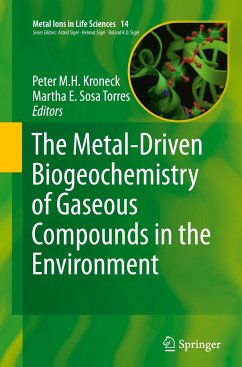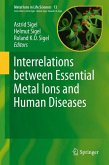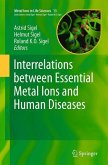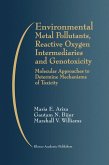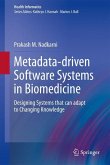MILS-14 provides a most up-to-date view of the exciting biogeochemistry of gases in our environment as driven mostly by microorganisms. These employ a machinery of sophisticated metalloenzymes, where especially transition metals (such as Fe, Ni, Cu, Mo, W) play a fundamental role, that is, in the activation, transformation and syntheses of gases like dihydrogen, methane, carbon monoxide, acetylene and those of the biological nitrogen and sulfur cycles. The Metal-Driven Biogeochemistry of Gaseous Compounds in the Environment is a vibrant research area based mainly on structural and microbial biology, inorganic biological chemistry and environmental biochemistry. All this is covered in an authoritative manner in 11 stimulating chapters, written by 26 internationally recognized experts and supported by nearly 1200 references, informative tables and about 100 illustrations (two thirds in color). MILS-14 also provides excellent information for teaching.
Peter M. H. Kroneckis a bioinorganic chemist who is exploring the role of transition metals in biology, with a focus on functional and structural aspects of microbial iron, copper and molybdenum enzymes and their impact on the biogeochemical cycles of nitrogen and sulfur.
Martha E. Sosa Torres is an inorganic chemist, with special interests in magnetic properties of newly synthesized transition metal complexes and their reactivity towards molecular oxygen, applying kinetic, electrochemical and spectroscopic techniques.
Peter M. H. Kroneckis a bioinorganic chemist who is exploring the role of transition metals in biology, with a focus on functional and structural aspects of microbial iron, copper and molybdenum enzymes and their impact on the biogeochemical cycles of nitrogen and sulfur.
Martha E. Sosa Torres is an inorganic chemist, with special interests in magnetic properties of newly synthesized transition metal complexes and their reactivity towards molecular oxygen, applying kinetic, electrochemical and spectroscopic techniques.
"This book is very well compiled and covers key information regarding small molecules that have an important impact in our environment. ... Relevant information is supported by high-quality illustrations and figures, allowing the reader to follow discussions about mechanisms of action, structure and function of metal-active sites, biological cycles or electron pathways. ... This book will be an excellent acquisition for chemistry libraries and for researchers and students interested on bioinorganic chemistry, biochemistry or inorganic chemistry." (Norah Barba-Behrens, Transition Metal Chemistry, Vol. 41, 2016)

